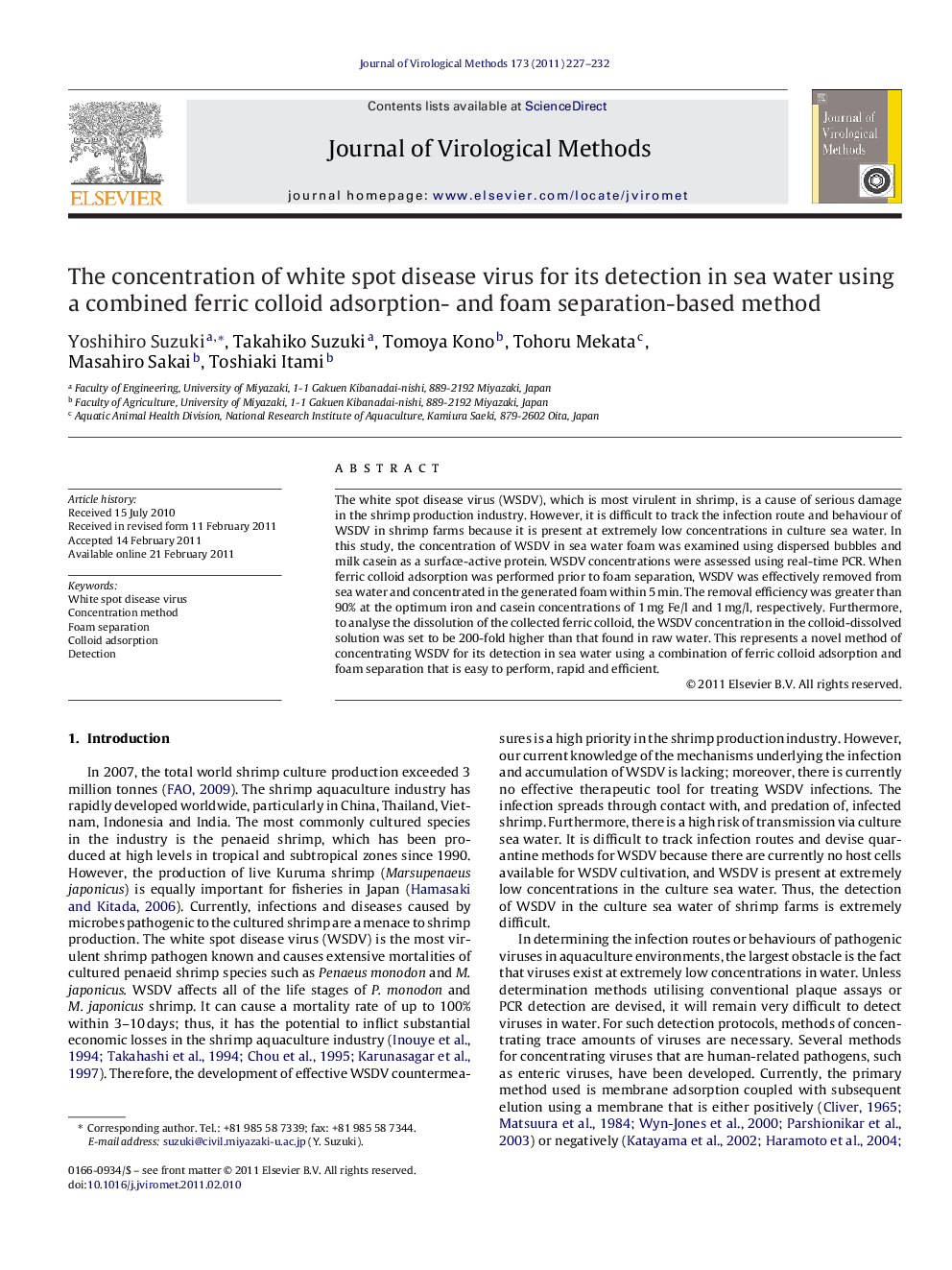| Article ID | Journal | Published Year | Pages | File Type |
|---|---|---|---|---|
| 6135231 | Journal of Virological Methods | 2011 | 6 Pages |
Abstract
The white spot disease virus (WSDV), which is most virulent in shrimp, is a cause of serious damage in the shrimp production industry. However, it is difficult to track the infection route and behaviour of WSDV in shrimp farms because it is present at extremely low concentrations in culture sea water. In this study, the concentration of WSDV in sea water foam was examined using dispersed bubbles and milk casein as a surface-active protein. WSDV concentrations were assessed using real-time PCR. When ferric colloid adsorption was performed prior to foam separation, WSDV was effectively removed from sea water and concentrated in the generated foam within 5Â min. The removal efficiency was greater than 90% at the optimum iron and casein concentrations of 1Â mg Fe/l and 1Â mg/l, respectively. Furthermore, to analyse the dissolution of the collected ferric colloid, the WSDV concentration in the colloid-dissolved solution was set to be 200-fold higher than that found in raw water. This represents a novel method of concentrating WSDV for its detection in sea water using a combination of ferric colloid adsorption and foam separation that is easy to perform, rapid and efficient.
Related Topics
Life Sciences
Immunology and Microbiology
Virology
Authors
Yoshihiro Suzuki, Takahiko Suzuki, Tomoya Kono, Tohoru Mekata, Masahiro Sakai, Toshiaki Itami,
